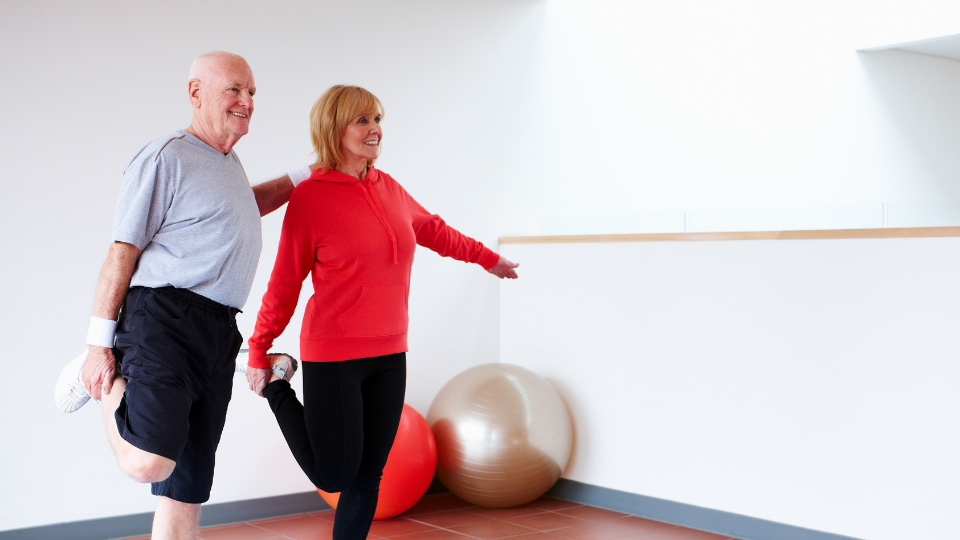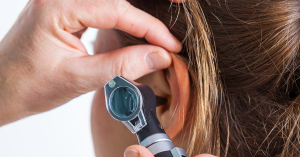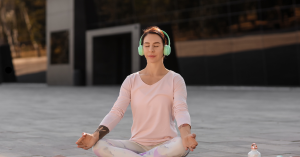When we think about hearing health, we often focus on the ears’ ability to pick up sounds, detect speech, and differentiate tones. But what many people don’t realize is that our sense of balance — which helps us stay upright, navigate spaces, and feel stable — is intricately linked to our hearing. This connection lies deep within the inner ear, where the auditory and vestibular systems share close physical and functional ties.
The vestibular system is responsible for balance and spatial orientation. It works in tandem with the cochlea, the organ of hearing, to help us make sense of our environment both audibly and physically. When either system is out of sync, it can lead to dizziness, falls, vertigo, or even hearing difficulties. For older adults especially, understanding this relationship is vital — age-related decline in vestibular function can exacerbate hearing problems and vice versa.
In this article, we’ll explore how balance and vestibular health impact hearing, examine common conditions that affect both, and provide guidance on how to maintain inner ear wellness for a more stable and sound-filled life.
The Inner Ear: The Intersection of Hearing and Balance
The inner ear is a remarkable and compact structure that houses two major systems responsible for hearing and balance: the cochlea and the vestibular system. Despite their distinct roles, they are closely interconnected and work together to help us interpret sound and maintain equilibrium.
The cochlea is a spiral-shaped, fluid-filled organ that converts sound vibrations into electrical signals sent to the brain via the auditory nerve. These signals are then interpreted as sound. Adjacent to the cochlea is the vestibular apparatus, which includes the semicircular canals, saccule, and utricle. These structures detect motion, head position, and spatial orientation, enabling us to stay upright, walk, and move without falling.
What makes this relationship especially significant is their shared anatomy and neural pathways. Both the cochlea and the vestibular system reside in the bony labyrinth of the inner ear and rely on similar fluids (perilymph and endolymph) to function properly. They also share the vestibulocochlear nerve (cranial nerve VIII), which transmits signals from both systems to the brain.
When there’s damage or dysfunction in one part of the inner ear, it can often affect the other. For instance, fluid imbalances or inflammation in the inner ear may impair both hearing and balance simultaneously. This is why symptoms like dizziness and hearing loss often occur together in conditions such as Ménière’s disease.
Understanding the dual function of the inner ear underscores the importance of a comprehensive approach to ear health — one that considers both auditory and vestibular factors as part of the same complex system.
Vestibular Disorders and Their Impact on Hearing
Vestibular disorders can be disruptive, disorienting, and — in many cases — directly linked to hearing issues. Because the vestibular and auditory systems are housed within the same structure in the inner ear, a disturbance in one often affects the other. For many people, symptoms like vertigo, imbalance, and hearing loss may arise together, indicating a shared underlying condition.
One of the most well-known vestibular disorders is Ménière’s disease. This chronic inner ear condition causes episodes of vertigo, tinnitus (ringing in the ears), a feeling of fullness in the ear, and fluctuating hearing loss. Ménière’s is believed to stem from abnormal fluid buildup in the inner ear, which disrupts both balance and hearing functions. Over time, it can lead to permanent hearing damage if left unmanaged.
Another common condition is vestibular neuritis, which results from inflammation of the vestibular nerve. While it primarily causes intense vertigo and balance problems, it can also affect hearing when combined with labyrinthitis, which involves inflammation of both the vestibular and auditory nerves. People with labyrinthitis may experience hearing loss, nausea, and disorientation, especially during the acute phase of the illness.
Benign Paroxysmal Positional Vertigo (BPPV) is another vestibular issue that, while not directly causing hearing loss, can affect one’s quality of life significantly. BPPV occurs when tiny calcium crystals in the inner ear become dislodged and interfere with the semicircular canals. Though hearing is typically preserved, the sensation of spinning or dizziness can make it difficult to hear clearly, concentrate, or follow conversations — especially in noisy environments.
There are also less common but serious disorders like acoustic neuromas, which are non-cancerous tumors that develop on the vestibulocochlear nerve. These tumors can cause gradual hearing loss, imbalance, and in some cases, facial numbness or weakness.
Recognizing the signs of vestibular disorders — particularly when they appear alongside hearing changes — is crucial. Early diagnosis and intervention can help manage symptoms, prevent complications, and preserve hearing health. Audiologists and ENT specialists often work together to evaluate both aspects of inner ear function, ensuring a holistic approach to treatment.
Age-Related Vestibular Decline and Hearing Health
As we age, it’s natural for many of our bodily systems to undergo gradual changes — and the inner ear is no exception. Both the auditory and vestibular systems experience age-related decline, which can affect hearing clarity, balance, and spatial awareness. These changes can significantly impact the quality of life for older adults and increase the risk of falls, isolation, and cognitive strain.
Presbycusis, or age-related hearing loss, is one of the most common conditions affecting older adults. It typically involves a gradual loss of high-frequency hearing, making it difficult to understand speech, especially in noisy environments. While this hearing loss is widely recognized, the accompanying decline in vestibular function is often overlooked.
Age-related vestibular decline is known as presbyvestibulopathy, and it includes reduced function of the semicircular canals, saccule, and utricle — the components of the vestibular system responsible for detecting head motion and maintaining equilibrium. This decline can lead to unsteadiness, a higher likelihood of dizziness, and a greater risk of falls, which are a leading cause of injury in older adults.
What makes this combination especially concerning is the compounding effect. For instance, someone with both hearing loss and poor balance may struggle to hear warning signals or environmental cues that help them avoid obstacles. This sensory deficit increases not only the risk of physical injury but also social withdrawal, anxiety, and depression.
Research has also shown a correlation between hearing loss and cognitive decline, with vestibular dysfunction possibly contributing further by affecting brain areas responsible for memory and spatial orientation. The dual burden of hearing and balance issues can accelerate cognitive fatigue, especially when the brain must work harder to compensate for missing sensory input.
Proactive management is key. Regular hearing tests, balance assessments, and early intervention can help detect these issues before they escalate. Simple actions like installing grab bars, using mobility aids, and addressing hearing challenges with hearing aids or assistive listening devices can dramatically improve safety and confidence in daily life.
Understanding that balance and hearing are not isolated issues — especially as we age — empowers individuals to seek comprehensive care. Supporting both systems together offers a better path to graceful aging, independence, and overall well-being.
How to Support Vestibular and Hearing Health Together
Maintaining both balance and hearing health is not just about treating symptoms — it’s about taking proactive steps to support the complex systems within the inner ear that keep us upright and connected to the world. Fortunately, there are many ways to care for these systems simultaneously, from lifestyle changes to professional therapies.
Stay Active with Balance-Enhancing Exercises
Regular physical activity, particularly exercises that challenge and improve balance, is one of the best ways to maintain vestibular health. Tai chi, yoga, and balance-specific physical therapy can help strengthen the muscles and coordination needed for stability. These exercises also train the brain to better integrate input from the eyes, inner ear, and joints — crucial for preventing falls and disorientation.
Address Hearing Loss Early
Untreated hearing loss can put strain on the brain, making balance harder to maintain. Hearing aids not only improve communication but also reduce cognitive load, which indirectly supports balance. Some modern hearing aids are even equipped with motion sensors or fall detection features, offering added safety for users at risk of imbalance.
Eat for Ear Health
A healthy diet benefits more than just your heart and waistline. Nutrients like magnesium, potassium, and vitamin D play a role in maintaining the inner ear’s function. Reducing salt intake may help manage inner ear fluid balance, especially for those with conditions like Ménière’s disease. Staying hydrated and limiting alcohol and caffeine can also support vestibular stability.
Engage in Vestibular Rehabilitation
For those experiencing dizziness or imbalance, vestibular rehabilitation therapy (VRT) can be life-changing. This specialized form of physical therapy targets inner ear dysfunction by retraining the brain to compensate for vestibular deficits. A trained therapist tailors exercises to each individual’s condition, improving both confidence and mobility.
Get Regular Check-ups
Annual hearing tests and balance assessments become increasingly important as we age. Audiologists can detect subtle hearing loss early, while ENT specialists or vestibular therapists can evaluate balance concerns before they lead to more serious issues. Early detection opens the door to preventive care rather than reactive treatment.
Minimize Environmental Hazards
Simple changes at home can greatly reduce the risk of falls, particularly for those with vestibular challenges. Secure rugs, add handrails, improve lighting, and remove clutter to create a safer living space. These small steps support both balance and confidence.
By combining these strategies, individuals can support both their hearing and vestibular systems in tandem. The goal isn’t just to prevent problems — it’s to maintain independence, connection, and peace of mind as we move through life.
When to Seek Professional Help for Balance and Hearing Concerns
Many people delay seeking help for dizziness, imbalance, or hearing loss, assuming these are just normal parts of aging. However, these symptoms can be early indicators of treatable vestibular or auditory issues — and in some cases, more serious medical conditions. Knowing when to seek professional evaluation is key to protecting both your safety and quality of life.
Warning Signs to Watch For
You should consult a healthcare provider if you experience any of the following:
- Persistent dizziness or a spinning sensation (vertigo)
- Frequent or unexplained falls
- Hearing loss in one or both ears, especially if it’s sudden
- Tinnitus (ringing, buzzing, or hissing in the ears)
- A feeling of fullness or pressure in the ears
- Difficulty following conversations, particularly in noisy environments
- Unsteady walking or difficulty maintaining balance, especially in the dark
These symptoms may point to issues like Ménière’s disease, vestibular neuritis, acoustic neuroma, or age-related vestibular decline. Prompt evaluation can help identify the cause and guide appropriate treatment.
Who to See: The Hearing-Balance Team
When it comes to balance and hearing, care is often collaborative. Here are the professionals typically involved:
- Audiologists assess hearing and some aspects of balance function. They perform hearing tests and can recommend hearing aids or other assistive devices.
- Otolaryngologists (ENTs) specialize in conditions of the ear, nose, and throat. They can diagnose complex vestibular disorders and offer medical or surgical treatments.
- Vestibular physical therapists develop personalized exercise plans to improve balance and reduce dizziness through vestibular rehabilitation.
- Neurologists may be involved if symptoms suggest a neurological cause, such as migraines or certain types of vertigo.
What to Expect During an Evaluation
A full vestibular-auditory evaluation may include:
- A detailed medical history and symptom review
- Hearing tests (audiometry)
- Balance and coordination tests (such as the Romberg or Dix-Hallpike maneuver)
- Video nystagmography (VNG) to assess inner ear and eye coordination
- Imaging studies (MRI or CT scans) if a structural issue is suspected
These assessments help pinpoint whether the issue lies in the inner ear, brain, or elsewhere — and guide a treatment plan tailored to your needs.
Don’t Wait for a Crisis
The longer symptoms are ignored, the greater the risk of injury, isolation, or permanent damage. Early diagnosis can lead to better outcomes, whether that means fitting a hearing aid, starting physical therapy, or addressing a treatable medical condition.
Ultimately, seeking professional help is a proactive step toward maintaining your independence, preventing falls, and staying engaged with the world around you — both physically and socially.
Conclusion
Our ability to hear and maintain balance may seem like two separate functions, but they are deeply connected within the intricate structure of the inner ear. Understanding the role of vestibular health in overall hearing is essential, especially as we age and face a higher risk of both hearing loss and balance-related issues.
From shared anatomy and neural pathways to overlapping symptoms in common disorders, it’s clear that taking care of one system means supporting the other. Conditions like Ménière’s disease, vestibular neuritis, and age-related decline can affect hearing and equilibrium in tandem, making early detection and comprehensive care all the more important.
Thankfully, there are many steps we can take to protect and enhance these vital senses — from balance exercises and dietary changes to regular check-ups with audiologists and ENT specialists. Tools like hearing aids and vestibular rehabilitation therapy can make a substantial difference in daily function and overall quality of life.
Whether you’re starting to notice subtle changes in your hearing, experiencing occasional dizziness, or simply looking to age more confidently, paying attention to both your balance and hearing is a wise and empowering choice. These two systems don’t just help us hear and move — they help us connect, engage, and live life to the fullest.
FAQ
What is the vestibular system, and how does it relate to hearing?
The vestibular system is part of the inner ear that controls balance and spatial orientation. It works alongside the cochlea, the hearing organ, and shares both physical space and neural pathways. Issues in one system can often affect the other due to their close connection within the inner ear.
Can vestibular disorders cause hearing loss?
Yes, some vestibular disorders — such as Ménière’s disease and labyrinthitis — can cause both balance problems and hearing loss. These conditions often involve inflammation or fluid imbalances that impact both the vestibular and auditory structures of the inner ear.
Is dizziness always related to ear problems?
Not always. Dizziness can have many causes, including cardiovascular issues, neurological conditions, medications, or anxiety. However, if dizziness is accompanied by hearing loss, tinnitus, or a feeling of fullness in the ear, it may point to a vestibular disorder and should be evaluated by a healthcare professional.
How can I improve both my hearing and balance as I age?
Regular hearing exams, balance-enhancing exercises like tai chi, a healthy diet, and prompt treatment for any ear-related symptoms can help. Using hearing aids when needed and undergoing vestibular rehabilitation therapy if balance issues arise can also support both systems.
When should I see a specialist for balance or hearing concerns?
If you experience frequent dizziness, unsteadiness, falls, hearing loss, or tinnitus — especially if symptoms are sudden or worsening — it’s important to consult an audiologist or ENT specialist. Early diagnosis can prevent further complications and improve quality of life.
This article is for informational purposes only and is not a substitute for professional medical advice, diagnosis, or treatment. If you are concerned about your hearing or ear health, please consult a qualified healthcare provider.






